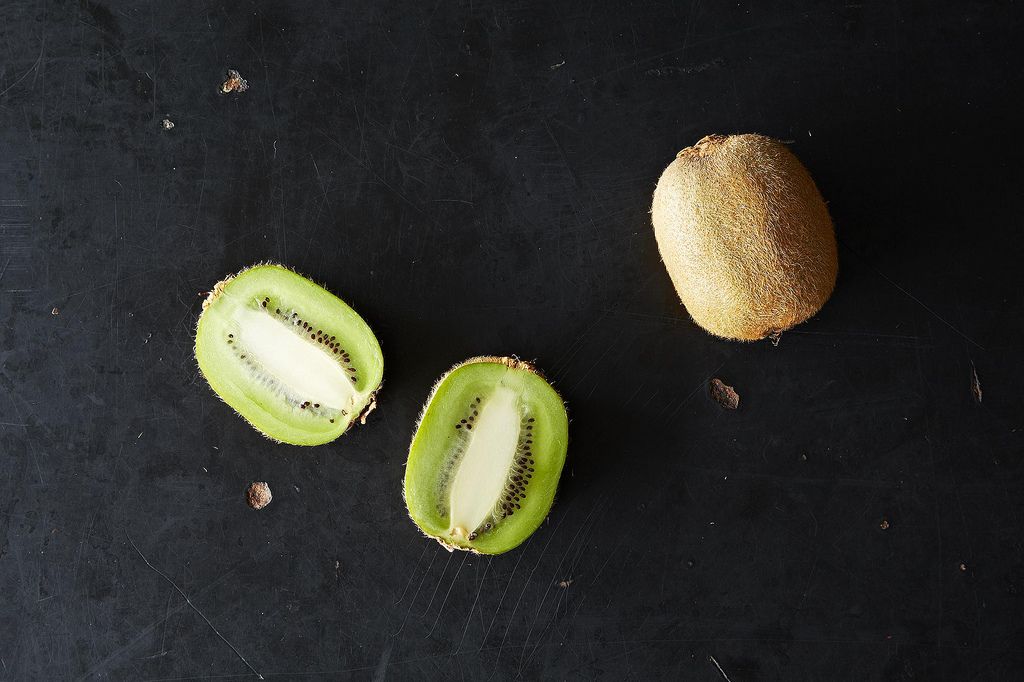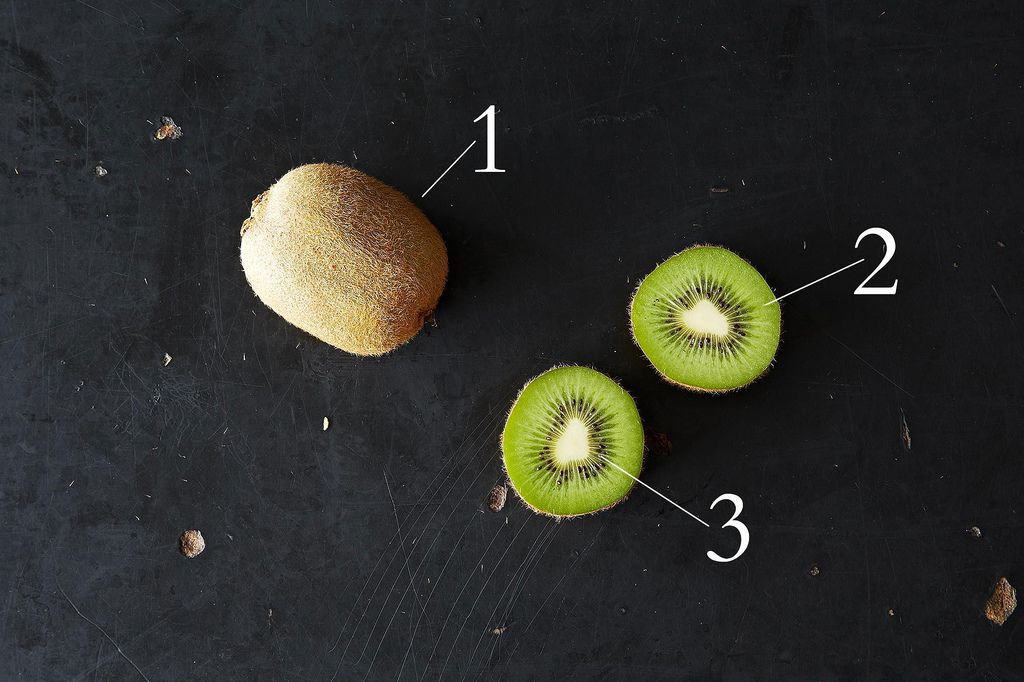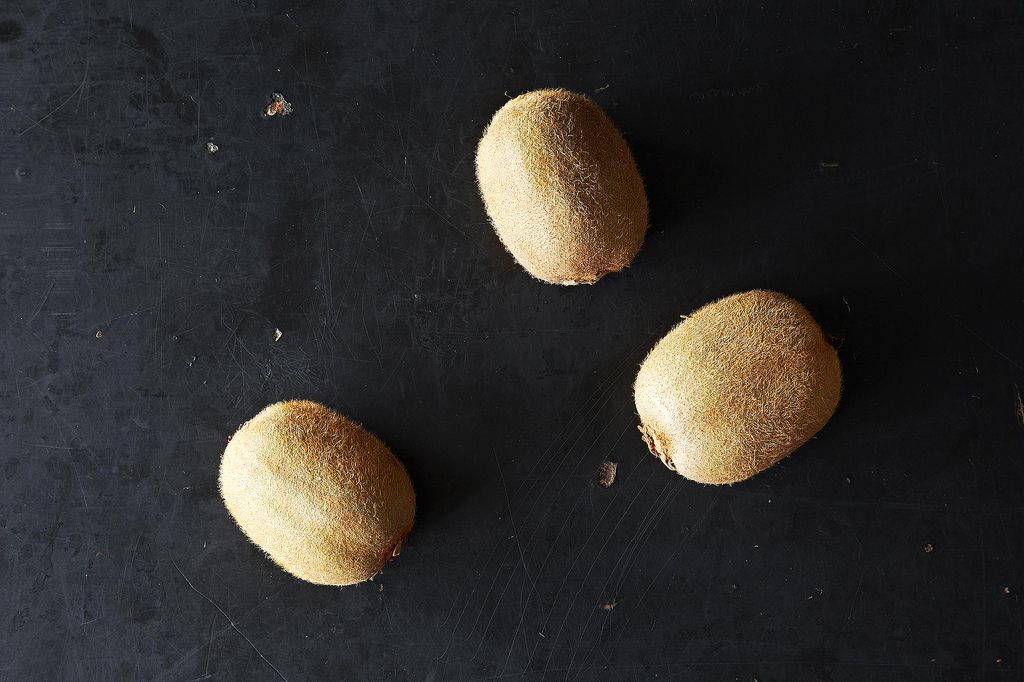Every week we get Down & Dirty, in which we break down our favorite unique seasonal fruits, vegetables, and more.
Today: It’s time to take your kiwifruit out of the fruit salad.

Where did their name come from? Kiwifruit, or simply kiwi, comes from New Zealand -- one of the major kiwifruit producers -- after the kiwi bird, due to their strikingly similar coloring and rotund frames. The fruit needed a new name to increase its market appeal (sound familiar?), and to avoid high taxes on melons and gooseberries. Kiwifruit aren’t either of those, but early names for the fruit included Chinese gooseberry (they are native to China) and melonette (a name so pretty it has its own font).
Imagine a field of kiwifruit growing. Are you picturing low bushes? Trees? It actually looks like a vineyard -- kiwifruit plants are vines, so they are grown similar to grapes. You might think of them as a summer fruit, but the vast majority that are grown in the U.S. are from California, where they're harvested in the fall. New Zealand’s opposite growing season, and the fact that kiwifruit can be held in commercial storage for many months (don’t try that at home) make it easy to find kiwis year-round at the store.
More: Kiwifruit can help you get a firmer pie filling.

What to Look For
Although there are a number of varieties of kiwifruit, the one you’ll most often find at the store is the the Hayward, with fuzzy brown skin (1) and a bright green interior (2). There are also varieties with sweeter golden-yellow flesh and some with a distinctive red-ring in the middle. The tiny black seeds (3) and peel are edible -- some prefer to brush off some of the fuzz first. Look for plump kiwifruits with smooth skin free from wrinkles and bruises.
How to Store and Prep
If you don’t want to eat your kiwi right away and it’s still firm, you can store it in the refrigerator for weeks -- just keep them on their own, away from other fruits like apples. Kiwifruit will ripen at room temperature, if you want to speed up the process, put them in a paper bag with an apple and leave them on the counter.
The simplest way to to prepare and eat your kiwifruit is to cut it in half, and scoop out bites with a spoon (a grapefruit spoon makes it even easier). This even has its own name: Slooping! If you’d prefer yours peel-free, use a small knife to remove the ends and then slice away the peel with a knife or vegetable peeler.

How to Use
Kiwifruit have a sweet-tart flavor compared to various blends of strawberries, melon, citrus, and pineapple. This makes them delightful in a fruit salad, but kiwifruit can do so much more. Top cheesecake or pavlova with kiwifruit, use them in sorbet or ice cream, or make a kiwi tart. Add them to cocktails and smoothies. Make jam or fruit leather.
Don’t stop with sweet dishes, though -- use kiwi in salsas and salads too. The kiwifruit contains an enzyme that helps break down protein, which means you can also kiwis as a meat tenderizer (but that enzyme also means they don't work well with gelatin unless they're blanched first). We've got a week's worth of kiwi dishes for you to try:
Friday: No Bake Kiwi & Coconut Tart with Dark Chocolate Almond Drizzle
Saturday: Kiwifruit Sweet Omelette
Sunday: Kiwifruit Banana Spelt Cake
Monday: Kiwi Marinated Chicken Taco with Kiwi Guacamole
Tuesday: Kiwi Avocado Sashimi
Wednesday: California Kiwi Sandwich with Roasted Red Peppers, Olive Tapenade, and Goat Cheese
Thursday: Kiwi Infused Pork Ravioli with Kiwi Sesame Vinaigrette
Photos by James Ransom




See what other Food52 readers are saying.